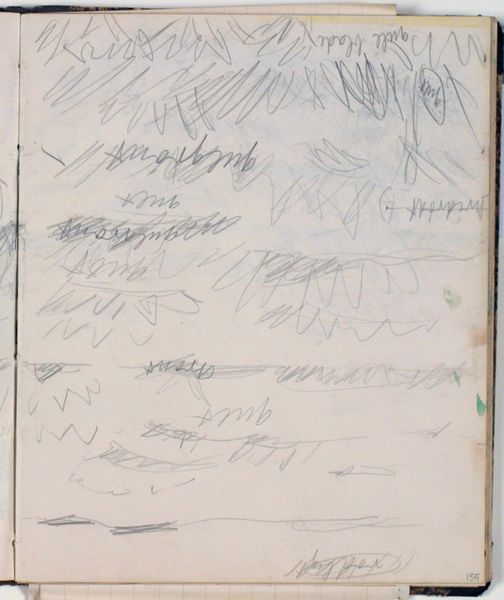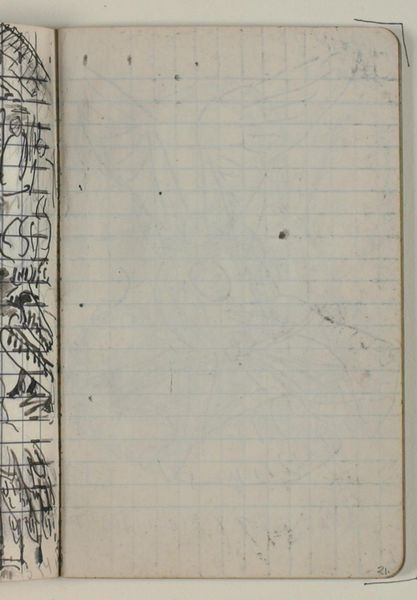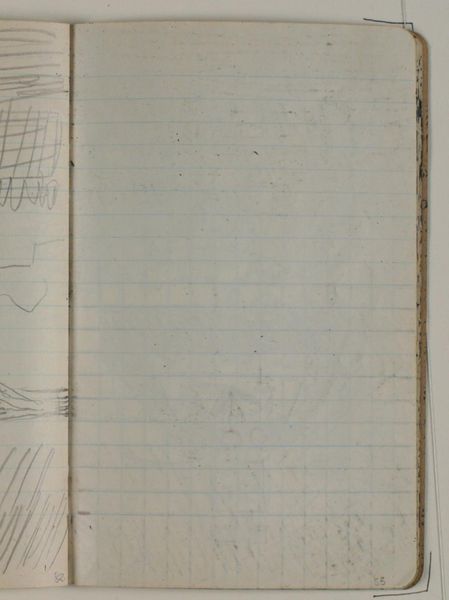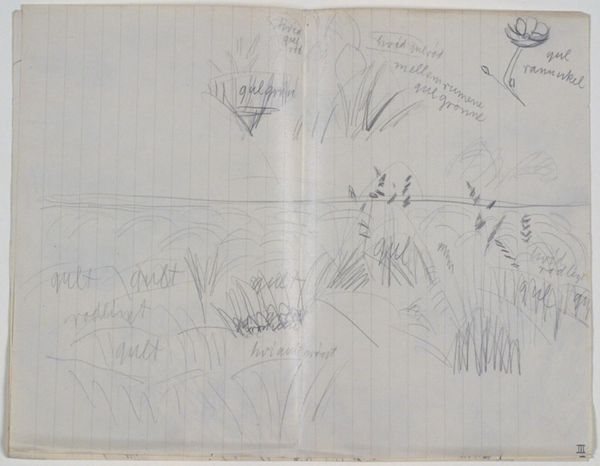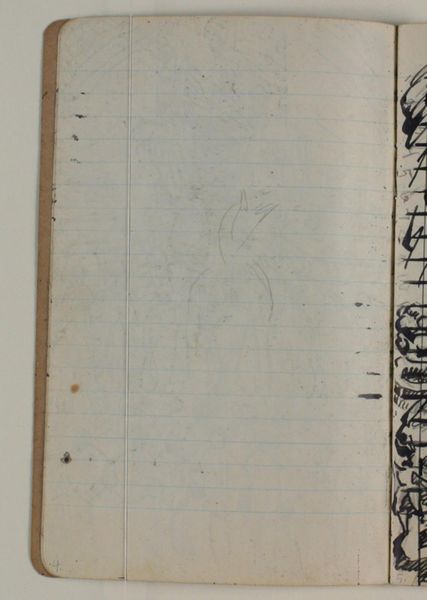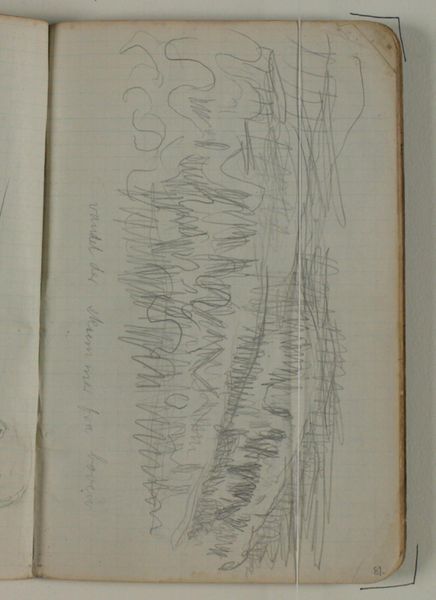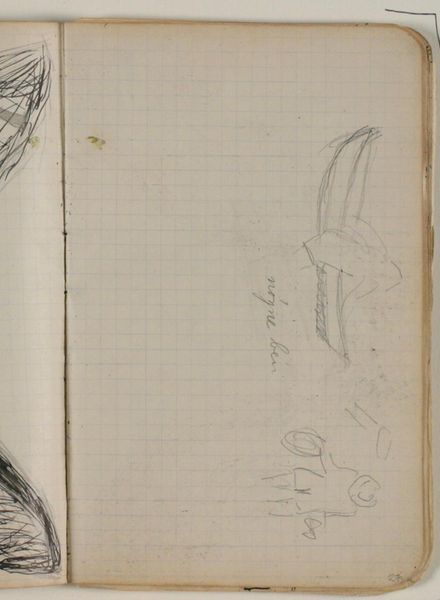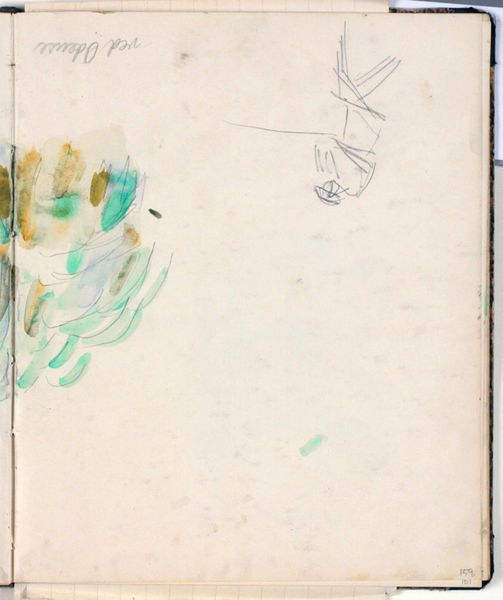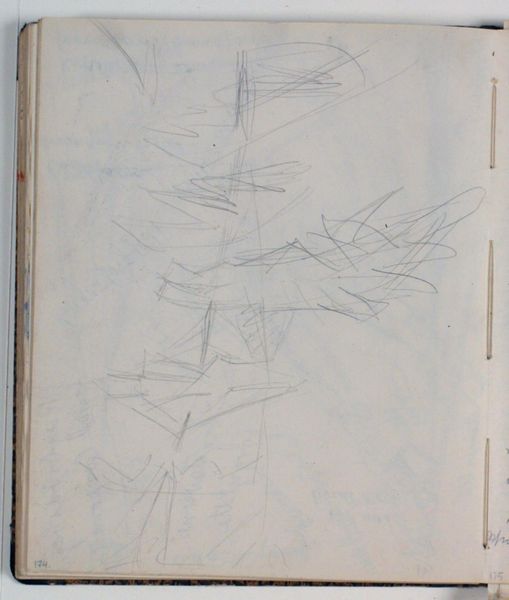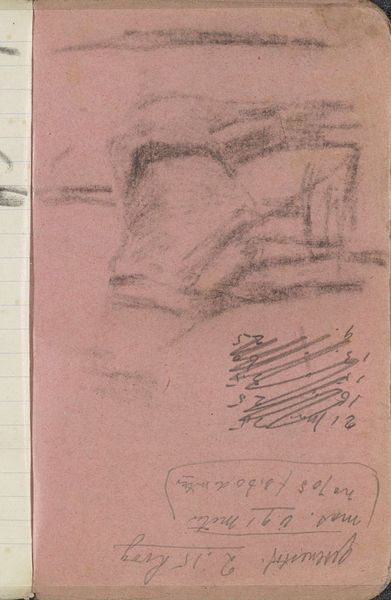
Landskabsstudie. Notater og farveangivelser 1930 - 1936
0:00
0:00
drawing, paper, pencil
#
drawing
#
landscape
#
paper
#
pencil
Dimensions: 226 mm (height) x 185 mm (width) x 112 mm (depth) (monteringsmaal), 221 mm (height) x 184 mm (width) (bladmaal)
Editor: We’re looking at Niels Larsen Stevns’ "Landskabsstudie. Notater og farveangivelser," a landscape study from the 1930s done with pencil on paper. It feels incredibly ephemeral, just these faint suggestions of a scene. What catches your eye? How do you interpret this work? Curator: This work functions almost like a coded map, wouldn't you agree? We see landscape distilled down to its most fundamental elements – line, horizon, perhaps a suggestion of foliage. But interspersed, literally woven into the depiction, are notes. Notice the phrase "blomsterne lomst til venstre"—"flowers bloom to the left." This imbues the image with a layered symbolic language. The artist is not simply representing a landscape; he's recording a sensory experience and its emotional resonance. He seeks to understand the symbolism inherent to our perception. Editor: So, the landscape itself becomes a carrier of memory, enhanced with his written observations? Curator: Precisely. Think of how cultures have historically encoded meaning onto the natural world: sacred groves, rivers as boundaries between worlds. Stevns appears to be engaging in a similar process, though on a more intimate, personal level. Are the notes more important than the landscape, or are they codependent? Editor: It makes me think about how we each create our own landscapes in our minds, colored by individual memories and associations. Thanks! Curator: Indeed. And how visual shorthand, almost a symbolic writing of the land, can hold profound cultural and personal significance.
Comments
No comments
Be the first to comment and join the conversation on the ultimate creative platform.
